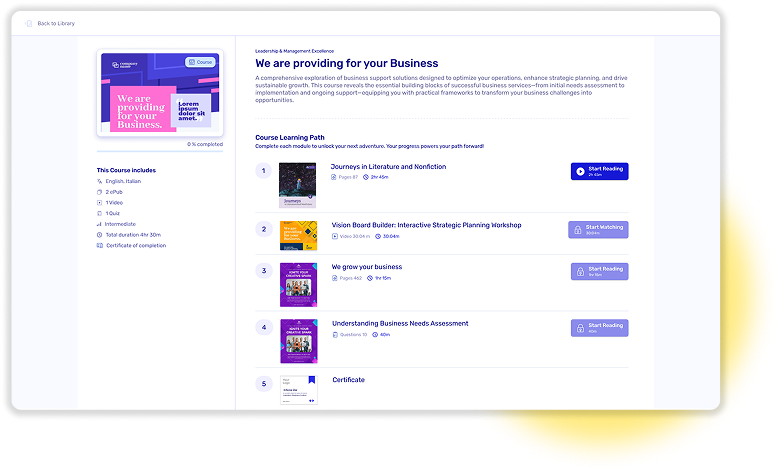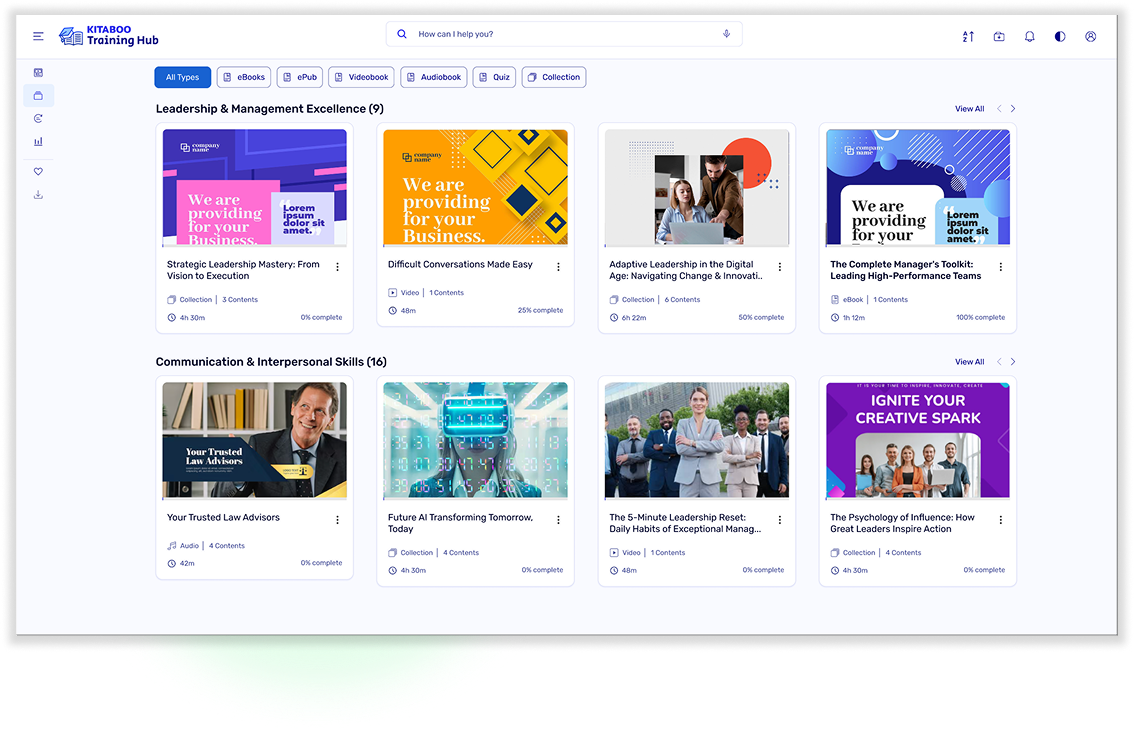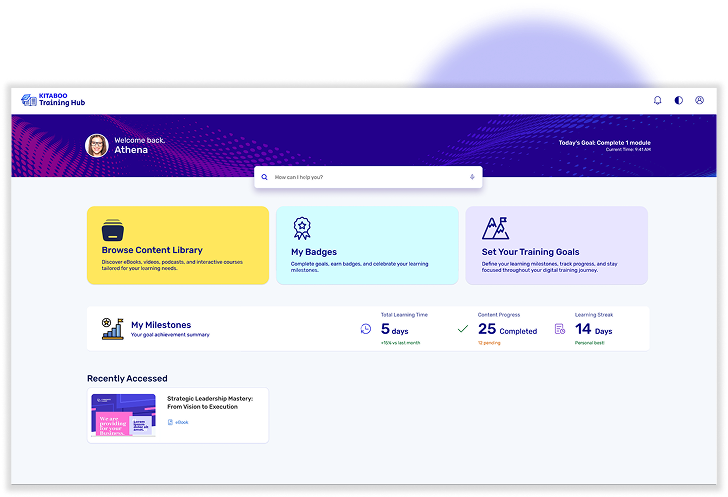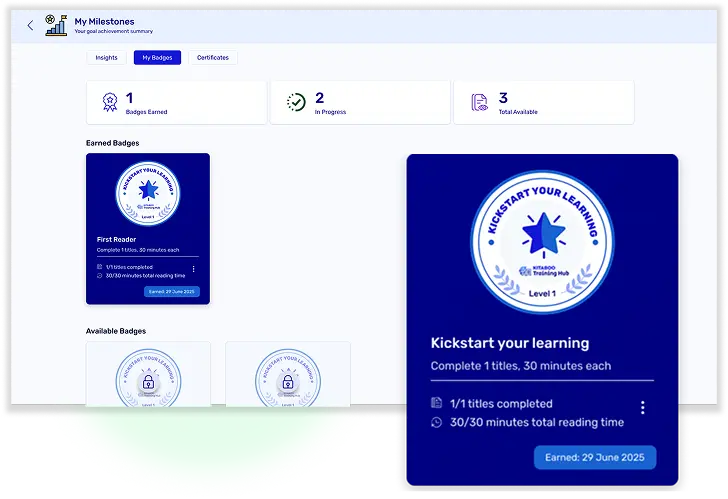Digitize Your Training Manuals
Goals. Badges. Insights.
500K+
Active Learners
98%
Completion Rate
24/7
Support
Unlock the future of structured and engaging digital learning
with KITABOO’s Training Hub platform.
The Challenge for Training Providers: Delivering Controlled & Motivating Learning Journeys
You're a training professional, not a traffic controller. Your greatest challenge isn't a lack of content, it's a lack of control. Disconnected resources and manual processes drain your time, while learners get lost in unstructured journeys.
The result? Inconsistent outcomes, unproven value, and a nagging feeling that your programs could be so much more.
Request Demo

Introducing KITABOO Training Hub
Your Centralized Learning Control Tower
What if you could turn that complexity into a competitive advantage? What if every learner followed the perfect path, every milestone was celebrated, and every certificate was a stamp of verified success? The KITABOO Training Hub is your centralized command center, designed to give you that control.
Request DemoDeliver Structured Learning Paths
with Clarity & Control
You don't just deliver content; you build learning journeys. Go from passive content delivery to active learning orchestration. With the Training Hub, you effortlessly create structured, sequential paths that lock and unlock content based on progress. Learners stay on track, and you stay in control.
Request Demo

Motivate & Recognize Achievements
with Smart Badges
You don't just teach; you inspire achievement. Engagement isn't a mystery; it's a measurable outcome. Our Smart Badge Tracking system lets you gamify success, celebrating every milestone with a verifiable badge. Learners stay motivated, and you get a clear view of their accomplishments.
Request DemoEmpower Learners
with Personal Goal & Progress Tracking
You don't just report completion; you prove impact. Move beyond basic metrics. The Training Hub provides deeper analytics into learner progress and authentic certificates with built-in verification. You're not just telling stakeholders your training works; you're proving it.
Request DemoReady to Master Your Training Delivery?
It's time to build, inspire, and verify learning excellence.
What’s trending in the Professional Training Industry
Fueling Aviation Training Success: KITABOO’s Impact on User Grow...
Discover how a leading American aviation training provider soared to new heights...
Top American Non-Profit Achieves Remarkable 263% Membership ...
Managing eBook orders, distributions, and assignments across partners was a significant challenge ...
KITABOO Instant Content Delivery Across Platforms Triples Growth for D...
The Publisher faced the challenge of enabling readers to access content offline ...




